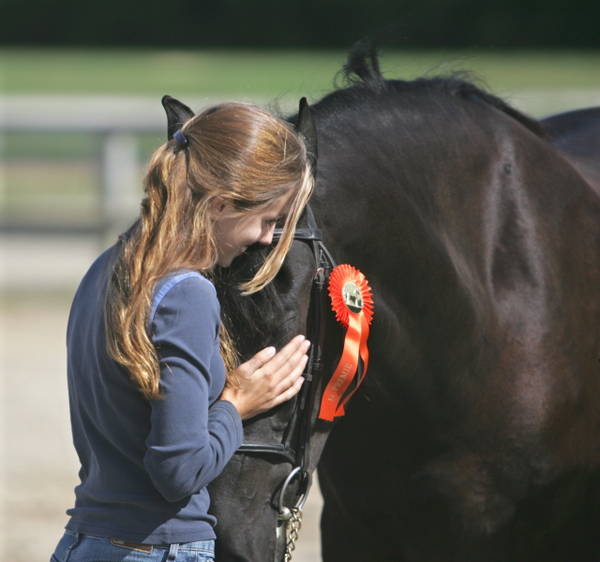When we moved our horses to Arizona, we learned about the prevalence of sand colic. Sand colic, while it can happen on the East Coast, is pretty rare in that area. In Arizona, however, it is unfortunately very common.
Sand colic results from the accumulation of ingested sand and dirt. This sand and dirt sinks to the bottom of the intestines where it irritates and causes a lot of discomfort.
What causes sand colic?
With the majority of paddocks and turnout in our area having all sand footing or very limited grass, many horses will ingest sand when eating off the ground or trying to graze in a sandy pasture. If your horse likes to scrounge around for tiny bits of hay or grain, they are even more likely to ingest sand.
Symptoms of Sand Colic
Sand colic can range in severity just like regular colic.
Mild symptoms will include discomfort and diarrhea. (This is when you should take action!) You’ll often see these horses laying sternal (on their bellies) as this can help reduce the irritation of the sand and the downward pull on their intestines.
Severe symptoms can include weight loss, excessive diarrhea, ongoing discomfort, and ultimately intestines can become twisted, displaced, or rupture.
Need to keep track of your horse records and hate using apps? Try our Free Horse Record Tracker!
Prevention
There are a few options that can help to reduce the risk of sand colic.
Feed in large tubs
This is a common feeding method in Arizona. You’ll want to make sure the tub or barrel is secured to a wall or corner to prevent your horse from knocking it over.
Stall mats
Stall mats are your best friend for reducing sand ingestion. Ideally, you want to feed your horse in a stall with stall mats that you clean off prior to feeding. If you do not have stalls, you can create a designated feeding area with stall mats outside.
Sweep
This may sound silly, but sweep sand and dirt off of your stall mats and out of your aisleway. Removing sand from the area will reduce the chances of your horse picking tidbits off of the ground.
Keep feed off the ground
You want to prevent hay or grain from falling onto the ground. Easier said than done, right! Using deep dishes and slow feeders can help reduce the amount of spillage as your horse eats.
Prolong hay feeding time
This article contains affiliate links. We may receive a small commission if you purchase through these links.
Or, provide free-choice hay, if your horse doesn’t have a weight issue. Free choice hay allows your horse to get a continual supply of fiber that will move the sand through the digestive tract. However, for our easy-keepers, free-choice hay is not a great idea. Instead, consider using a slow feeder to prolong the time they are eating the hay.
Psyllium Pellets
This is a slightly debated method, though very commonly used among horse owners. Some studies suggest free-choice hay is more effective than feeding psyllium pellets. However, we have had good success feeding psyllium one week out of each month. Talk to your veterinarian about suggestions that will meet your horse’s needs.

I’ve been around horses my entire life, but my Friesian journey started just over 20 years ago. Our horses have always been a part of our family. They have traveled with us as we relocated from Vermont to New York to Iowa and finally, to Arizona. I can’t wait to share our story with you!
Related
May 12, 2021
What are the Signs of Sand Colic and How to Prevent It

Leave a Reply Cancel reply
@starlitridgefriesiansandfells
LET'S BE FRIENDS ON INSTAGRAM